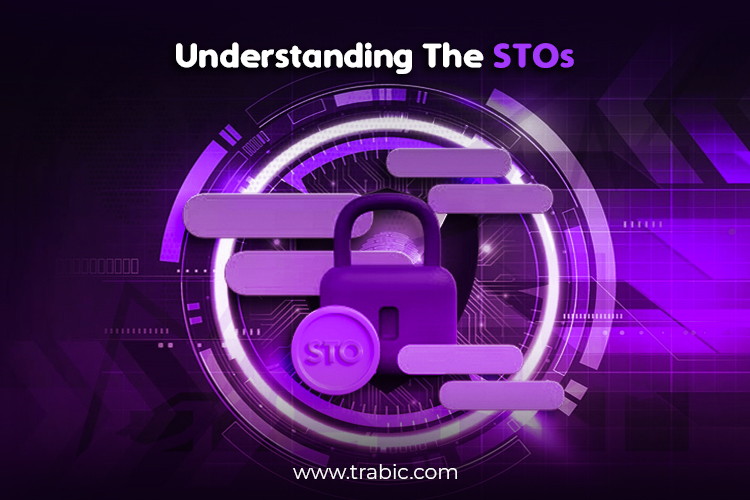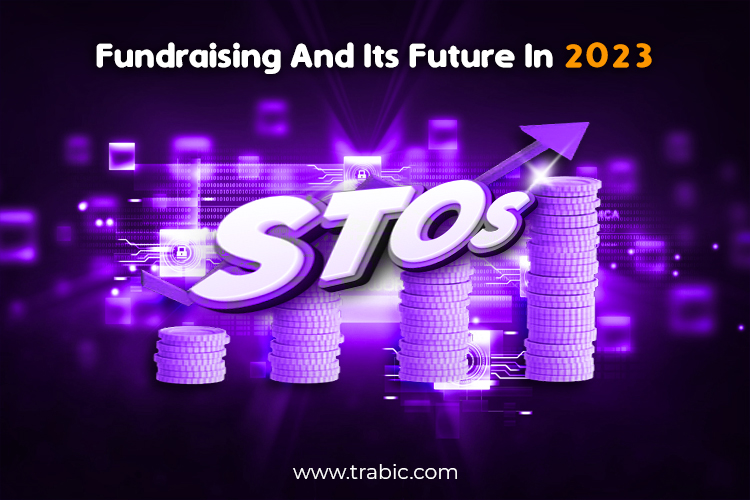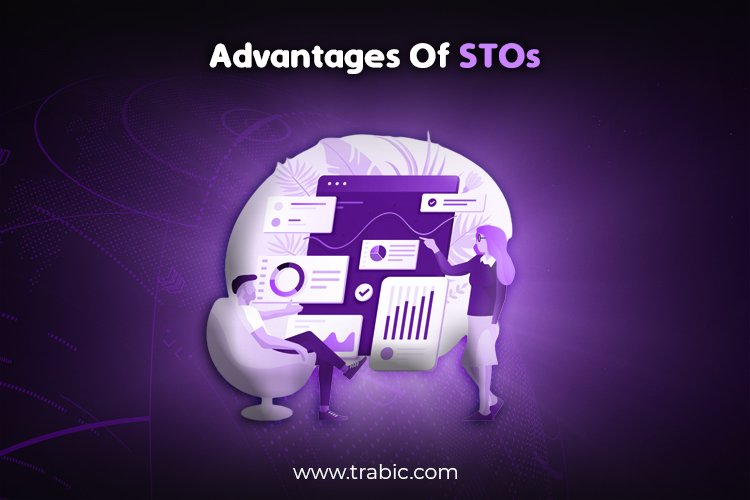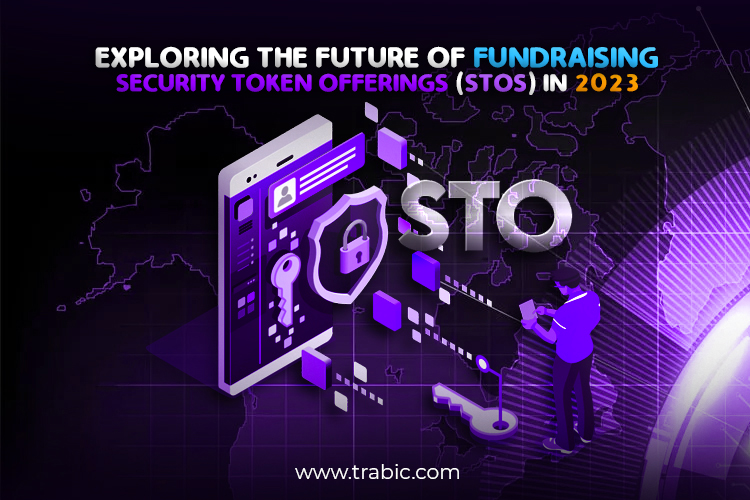In the ever-evolving land of finance and technology, traditional methods of fundraising and investing have undergone significant transformations. One such innovation that has gained traction in recent years is the Security Token Offering (STO). STOs are revolutionizing how companies raise capital, offering a blend of traditional securities and blockchain technology. In this blog post, we’ll delve into what STOs are, their benefits, challenges, and their potential impact on the future of fundraising.
Understanding Security Token Offerings (STOs):

A Security Token Offering is a fundraising mechanism that combines traditional securities’ benefits with blockchain technology’s efficiency and transparency. Unlike Initial Coin Offerings (ICOs) that often skirt regulations, STOs are designed to comply with securities regulations in the jurisdictions they operate. STOs issue security tokens representing ownership or investment in a company, real estate, or other assets. These tokens can be in equity, debt, or other financial instruments.
Benefits of STOs:
- Regulatory Compliance: STOs are designed to operate within existing securities laws, providing legitimacy and protection for both issuers and investors. This compliance reduces the risk of legal challenges and regulatory scrutiny.
- Global Accessibility: Blockchain technology facilitates borderless transactions, enabling investors worldwide to participate in STOs without traditional barriers like geographic restrictions and currency conversions.
- Liquidity: Security tokens can be traded on specialized secondary markets, providing investors with increased liquidity compared to traditional private investments.
- Fractional Ownership: STOs allow for fractional ownership of assets, making high-value investments more accessible to a broader range of investors.
- Automation and Efficiency: Smart contracts built into the blockchain automate various processes like dividend distribution and compliance, reducing administrative overhead.
Challenges and Considerations:
- Regulatory Complexity: Navigating securities regulations in different jurisdictions can be complex and time-consuming. Ensuring compliance is essential for the success of an STO.
- Market Acceptance: While STOs offer a compelling blend of traditional finance and blockchain technology, wider adoption is still needed for the concept to reach its full potential.
- Security Concerns: Despite the robustness of blockchain technology, security breaches, and vulnerabilities can still occur, leading to potential token theft or fraud.
- Educational Gap: As STOs are a relatively new concept, educating issuers and investors about the benefits and processes involved is crucial for widespread adoption.
The Future of Fundraising:

Security Token Offerings have the potential to reshape the fundraising landscape. As more companies recognize the benefits of STOs, they may choose this route over traditional fundraising methods. STOs could democratize investment by allowing a broader range of individuals to invest in early-stage companies, real estate projects, and more.
Additionally, STOs could bridge the gap between the traditional financial sector and the blockchain ecosystem as institutional investors become more comfortable with regulated token offerings. This convergence could increase liquidity, efficiency, and transparency in the financial markets.
Additional Points on Security Token Offerings (STOs):
- Enhanced Transparency and Accountability: Blockchain’s inherent transparency and immutability ensure that all transactions related to security tokens are recorded on a distributed ledger. This level of transparency fosters trust among investors, as they can independently verify ownership and transaction history. This accountability can lead to a healthier investment ecosystem.
- Reduced Middlemen and Costs: STOs can reduce the number of intermediaries involved in traditional fundraising processes. This reduction can lower costs for issuers and investors, as fees associated with brokers, custodians, and other intermediaries are minimized.
- Inclusion of Retail Investors: STOs allow retail investors, often excluded from traditional private investment opportunities, to participate in early-stage funding rounds. This democratization of investment opportunities has the potential to level the playing field and provide a broader range of people with access to potentially high-growth assets.
- Tokenization of Real Assets: Beyond equity and debt, STOs can tokenize real-world assets such as real estate, fine art, and commodities. This tokenization can unlock liquidity in traditionally illiquid markets, enabling asset owners to fractionalize ownership and attract a broader range of investors.
- Evolution of Regulatory Frameworks: The rise of STOs has prompted regulators worldwide to rethink and adapt their securities regulations to accommodate this new fundraising model. As regulators balance innovation and investor protection, STOs could drive regulatory advancements that benefit both parties.
- Secondary Market Opportunities: Security tokens can be traded on secondary markets, providing investors with opportunities to exit their investments more efficiently than traditional venture capital or private equity investments. These secondary markets can create a vibrant ecosystem where investors buy and sell security tokens.
- Cross-Border Investments: STOs can facilitate cross-border investments by standardizing regulatory compliance through tokenization. This can attract international investors and expand the reach of fundraising campaigns beyond a single jurisdiction.
- Integration of AI and Smart Contracts: Artificial Intelligence (AI) and smart contracts can enhance the STO ecosystem. Smart contracts can automatically enforce compliance measures, dividend distributions, and other terms of the investment. AI can analyze data to provide insights into investor behavior and market trends.
- Synergy with Decentralized Finance (DeFi): STOs can synergize with the growing DeFi sector. Security tokens can be integrated into DeFi protocols to offer decentralized lending, borrowing, and trading, potentially enhancing liquidity and flexibility for token holders.
- Educational Initiatives: Educational initiatives are crucial to foster broader adoption of STOs. Both issuers and investors must understand the benefits, risks, and processes involved. Webinars, workshops, and online resources can bridge the knowledge gap and promote informed decision-making.
- Hybrid Fundraising Models: Some companies might opt for hybrid fundraising models, combining traditional venture capital or angel investment with STOs. This hybrid approach can attract both traditional investors and those interested in the novel aspects of STOs.
- Potential for Token Standards: As the STO landscape evolves, the development of standardized token formats and issuance platforms could simplify the creation, issuance, and management of security tokens across different projects and industries.
In Summary: Security Token Offerings represent a convergence of financial tradition and technological innovation. While challenges exist, the potential benefits are substantial – increased accessibility to capital and assets, enhanced transparency, and reduced costs. As the regulatory environment evolves and technological advancements unfold, STOs could profoundly shape the future of fundraising and investing. However, prudent due diligence, regulatory compliance, and ongoing education will be essential to realize the promise of STOs in the long term fully.
Advantages Of Security Token Offerings:

Security Token Offerings represent a pivotal evolution in the finance realm, bridging the gap between traditional securities and the revolutionary capabilities of blockchain technology. The advantages offered by STOs encompass regulatory compliance, fractional ownership, cost efficiency, enhanced security, and investor empowerment.
Crypto platforms play a central role in safeguarding and enhancing these advantages by providing secure, transparent, and accessible avenues for investors to participate in STOs.
As the landscape of finance continues to evolve, the symbiotic relationship between STOs and crypto platforms is poised to reshape the investment landscape, providing a glimpse into a more democratized, efficient, and secure financial future.
Security tokens offer several distinct advantages over traditional financial instruments, contributing to their appeal and the growing interest in their adoption. Here are some critical advantages of security tokens:
- Global Accessibility: Security tokens are issued on blockchain networks, enabling investors worldwide to participate in investment opportunities without the geographical limitations and barriers often accompanying traditional financial markets.
- 24/7 Trading: Unlike traditional financial markets that operate within specific hours and days, security tokens can be traded 24/7, providing investors greater flexibility and the ability to respond to real-time market movements.
- Fractional Ownership: Security tokens can be divided into smaller fractions, allowing investors to own a portion of high-value assets that might have been otherwise out of their financial reach. This fractional ownership makes investing in a diverse range of assets more attainable.
- Liquidity Improvement: Security tokens can be traded on secondary markets that offer increased liquidity compared to traditional private markets. This enhanced liquidity can lead to quicker and easier exits for investors seeking to sell their holdings.
- Automated Compliance: Smart contracts embedded in security tokens can automatically enforce compliance rules and regulations. This ensures that only eligible investors can participate in offerings, dividends are distributed accurately, and other regulatory requirements are met, reducing the administrative burden for issuers.
- Reduced Intermediaries: By eliminating or reducing the number of intermediaries involved in transactions, such as brokers, clearinghouses, and custodians, security tokens can lead to lower transaction costs and more direct interactions between issuers and investors.
- Transparency: Blockchain technology provides an immutable transaction related to security tokens. This transparency fosters trust among investors by allowing them to verify ownership and transaction history independently.
- Enhanced Security: Security tokens benefit from the robust security features of blockchain technology, including encryption and decentralized storage. This can lessen the risk of fraud, hacking, and unauthorized access.
- Programmability: Security tokens can carry programmable features through intelligent contracts. This opens the door to more complex financial instruments and innovative structures, allowing for customizing terms and conditions that automatically execute based on predefined triggers.
- Access to Diverse Asset Classes: Security tokens can represent ownership in many assets, including traditional securities, real estate, commodities, and intellectual property. This diversification potential can attract a broader spectrum of investors with varying risk tolerances and interests.
- Efficiency and Speed: Blockchain technology streamlines security token issuance, transfer, and management. This efficiency reduces the time and administrative effort required for dividend distribution and ownership transfers.
- Compliance with Regulations:, Unlike some other blockchain-based fundraising methods, security tokens are designed to comply with existing securities regulations. This compliance provides legal legitimacy and protection for both issuers and investors.
- Integration with DeFi: Security tokens can be integrated into decentralized finance (DeFi) platforms, allowing for innovative financial products and services that leverage the advantages of both security tokens and blockchain-based decentralized protocols.
Incorporating these advantages, security tokens hold the potential to reshape the financial landscape by combining the familiarity of traditional securities with the technological advancements and opportunities provided by blockchain technology.
The future of security tokens is a compelling intersection of technological innovation, regulatory evolution, and the changing landscape of financial markets. As we look ahead, several trends and developments point toward a promising future for security tokens:
- Mainstream Adoption: While still in its early stages, the concept of security tokens is gradually gaining acceptance among traditional financial institutions, regulators, and investors. As regulations become more apparent and market infrastructure matures, security tokens could transition from a niche innovation to a mainstream investment vehicle.
- Regulatory Clarity: Regulatory frameworks worldwide are evolving to accommodate security tokens. More precise guidelines and regulations will give issuers and investors the confidence to engage in tokenized offerings, leading to increased adoption and market growth.
- Tokenization of Traditional Assets: Traditional assets such as real estate, fine art, and other illiquid assets are being tokenized, opening up opportunities for fractional ownership and increased liquidity. Tokenization could make investing in these assets more accessible and liquid, transforming markets once reserved for high-net-worth individuals.
- Interoperability and Standards: As the security token ecosystem evolves, industry players are working on developing standards for token issuance, trading, and management. Interoperability among blockchain platforms and token standards could create a more cohesive and accessible market for security tokens.
- Secondary Market Growth: Secondary markets for security tokens will likely expand, offering investors increased liquidity and flexibility. As more security tokens are traded on these platforms, the market liquidity could rival traditional stock exchanges.
- Institutional Involvement: Institutional investors, including venture capital firms, private equity funds, and traditional financial institutions, are showing a growing interest in security tokens. Their involvement could accelerate the adoption and legitimization of this new investment vehicle.
- Integration with DeFi: The synergy between security tokens and decentralized finance (DeFi) protocols could lead to innovative financial products and services. These include tokenized derivatives, lending and borrowing platforms, and other decentralized financial instruments that leverage the benefits of both ecosystems.
- Enhanced Token Features: Advances in intelligent contract technology could enable security tokens with more advanced features, such as dynamic dividend distribution, automatic compliance enforcement, and conditional ownership transfers based on predefined events.
- Cross-Border Investments: Security tokens could further streamline cross-border investments by providing standardized compliance processes and reducing the complexities associated with international transactions.
- Education and Awareness: As awareness and understanding of security tokens increase, educational initiatives, and resources will play a vital role in driving adoption. Informing issuers and investors about security tokens’ benefits, risks, and technical aspects will be crucial for their continued growth.
- Evolution of Exchanges: Traditional securities exchanges are beginning to explore the incorporation of security tokens into their platforms. Integrating security token trading alongside traditional equities could blur the lines between these two types of investments.
- Mergers of Finance and Technology: The convergence of financial expertise with technological innovation will likely lead to the development of new financial products, investment vehicles, and marketplaces that harness the potential of security tokens.
In conclusion, the future of security tokens holds significant promise for transforming how investments are made, assets are owned, and markets operate. As technology evolves, regulatory frameworks become more defined, and market participants collaborate, security tokens could become a cornerstone of the financial landscape, offering benefits to issuers and investors alike.
Conclusion:
The emergence of Security Token Offerings represents an exciting intersection of finance and technology. By leveraging the power of blockchain to offer compliant and accessible investment opportunities, STOs can transform how companies raise capital and investors access new assets. However, as with any innovation, challenges must be addressed for STOs to fulfill their promise. With continued education, regulatory cooperation, and technological advancements, STOs could usher in a new era of fundraising that benefits both issuers and investors alike.
In conclusion, the Security Token Offerings (STOs) concept represents a transformative fusion of traditional finance and cutting-edge blockchain technology. This innovative fundraising mechanism has the potential to reshape the way companies raise capital, investors access opportunities, and the financial ecosystem functions as a whole.
Security tokens offer many advantages that set them apart from their traditional counterparts. These tokens enable global accessibility, 24/7 trading, fractional ownership, increased liquidity, automated compliance, reduced intermediaries, transparency, enhanced security, and programmability. These benefits converge to create a dynamic and efficient investment environment that aligns with the demands of today’s digital age.
However, the journey of security tokens has its challenges. Overcoming regulatory complexities, ensuring market acceptance, addressing security concerns, and bridging the educational gap are crucial steps in realizing the full potential of STOs. Collaborative efforts among regulators, innovators, and market participants will be pivotal in shaping a regulatory landscape that fosters growth while safeguarding investor interests.
Looking ahead, the future of security tokens is promising. Mainstream adoption is on the horizon, driven by evolving regulations providing a solid market growth foundation. Traditional assets are being tokenized, creating opportunities for fractional ownership and liquidity in previously constrained markets. Interoperability, secondary market expansion, institutional engagement, and integration with DeFi are trends that could amplify the impact of security tokens on the financial landscape.
As security token ecosystems continue to evolve, education and awareness initiatives will play a central role in driving their success. Knowledge dissemination will empower issuers and investors to make informed decisions, creating a more inclusive and robust investment ecosystem.
In essence, security tokens embody the harmonious integration of the old and the new, the traditional and the innovative. By combining the familiarity of securities with the efficiency, transparency, and global accessibility of blockchain technology, security tokens are poised to revolutionize fundraising, democratize investments, and redefine the very nature of financial markets. As this evolution unfolds, the collaboration of technology, finance, and regulatory stewardship will pave the way for a future where security tokens stand as a symbol of financial progress and inclusivity.
